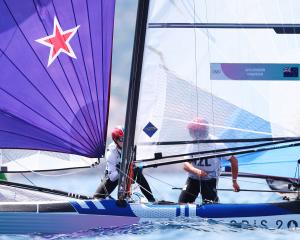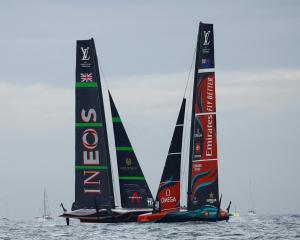Winning line honours may be the Sydney to Hobart yacht race's glamour trophy, but securing overall victory remains the purist's holy grail.
The famous 628-nautical mile race is now so utterly dominated by cash and technology that only the largest and most expensive boats ever stand a chance of reaching Tasmania first.
And there's nothing wrong with that - line honours is an exciting, design-driven pursuit, not unlike modern Formula One racing.
But imagine Mark Webber's Red Bull car with all its modern gadgets going up against Ayrton Senna's late 1980s McLaren and you get an idea of the gulf between some of the Sydney-Hobart yachts.
To level the playing field the handicap system exists to ensure even the smallest vessels have a chance of overall victory - provided they sail brilliantly and have Lady Luck onboard.
The Tattersall's Cup is awarded to the yacht that finishes the race fastest, once boat size and other handicap factors are taken into consideration.
And that means dozens of ordinary skippers in this year's Sydney-Hobart, which starts today, can dream of reaching the very top of their sport.
"The Tattersall's Cup is the pinnacle of sporting achievements," Wild Rose skipper Roger Hickman, the 1993 handicap winner, said.
Hickman's 43-foot yacht is less than half the length of 2012 line honours favourite Wild Oats XI and has little in the way of its high-tech gadgets or cutting-edge design. Yet the handicap system means it's totally in the running for overall victory.
And the same goes for at least another 25 boats in this year's 77-boat fleet including Matt Allen's Ichi Ban and Jim Cooney's Brindabella.
Black Jack, the 66-foot Reichel Pugh class yacht, is another contender and skipper Mark Radford says good fortune plays as much of a role as good sailing.
"The wind can stop or change direction, which is the lottery part of ocean racing," he said.
How the handicap system works
*Yacht racing handicaps are similar to the system in golf - they're designed to level the playing field between boats of different sizes and design.
*Sydney-Hobart organisers use the IRC handicap system, the details of which remain secret to prevent yacht designers creating boats that could take advantage of the rules.
*Under the IRC rule, a yacht owner takes a series of fairly straightforward measurements of his or her yacht; the length, weight, overhangs and sail sizes, whether the boat has a fixed or canting keel, water ballast, carbon fibre or aluminium mast.
*That information is sent to the Rating Office of the Royal Ocean Racing Club in the UK, which then issues a rating for the boat, which is basically a multiplier of the boat's elapsed time during a race.
*Each hour the boat takes to finish is multiplied by its rating time handicap factor to produce its corrected time. The higher the rating, the bigger the multiplier, the bigger the difference between handicap time and elapsed time.












